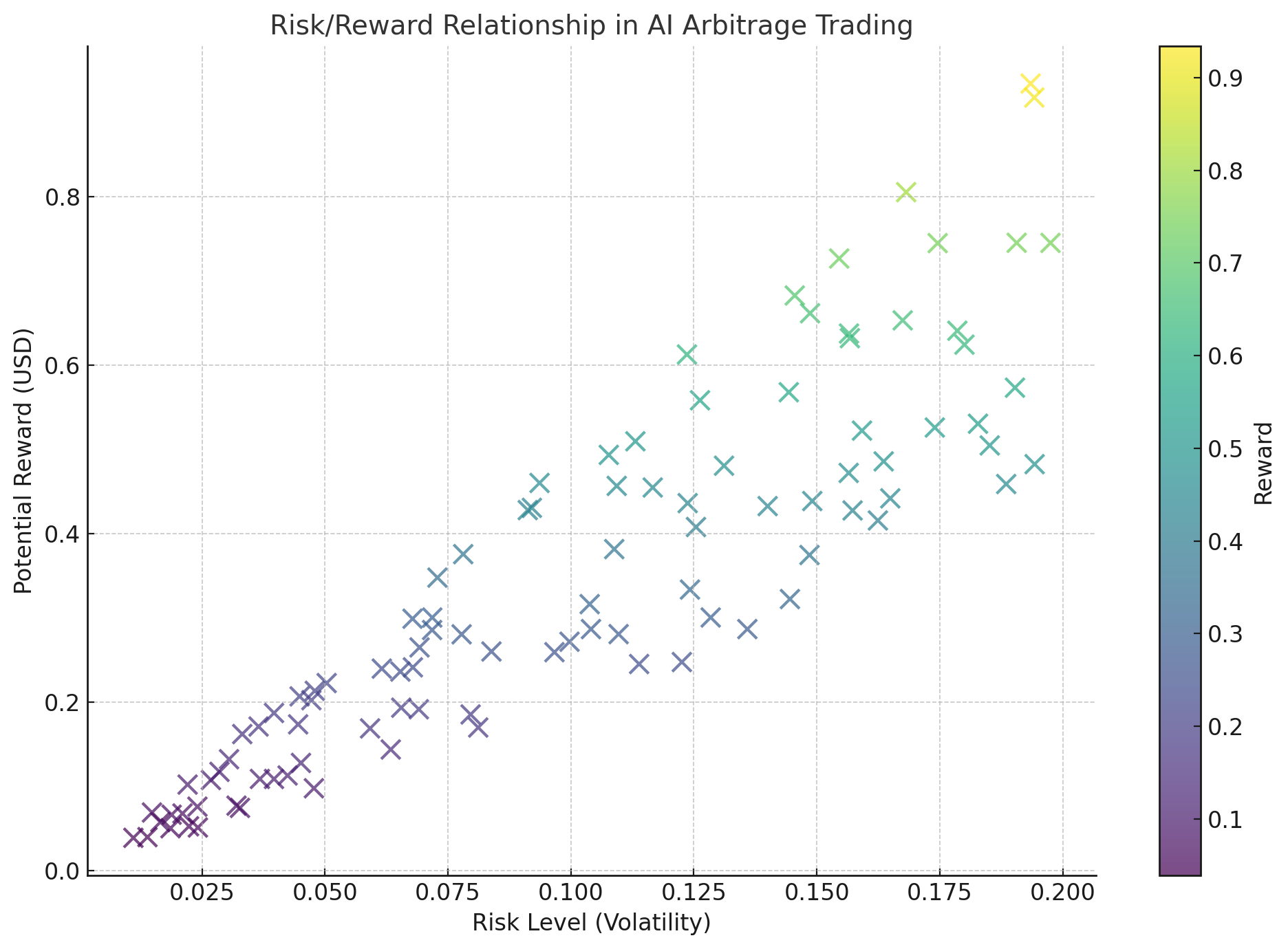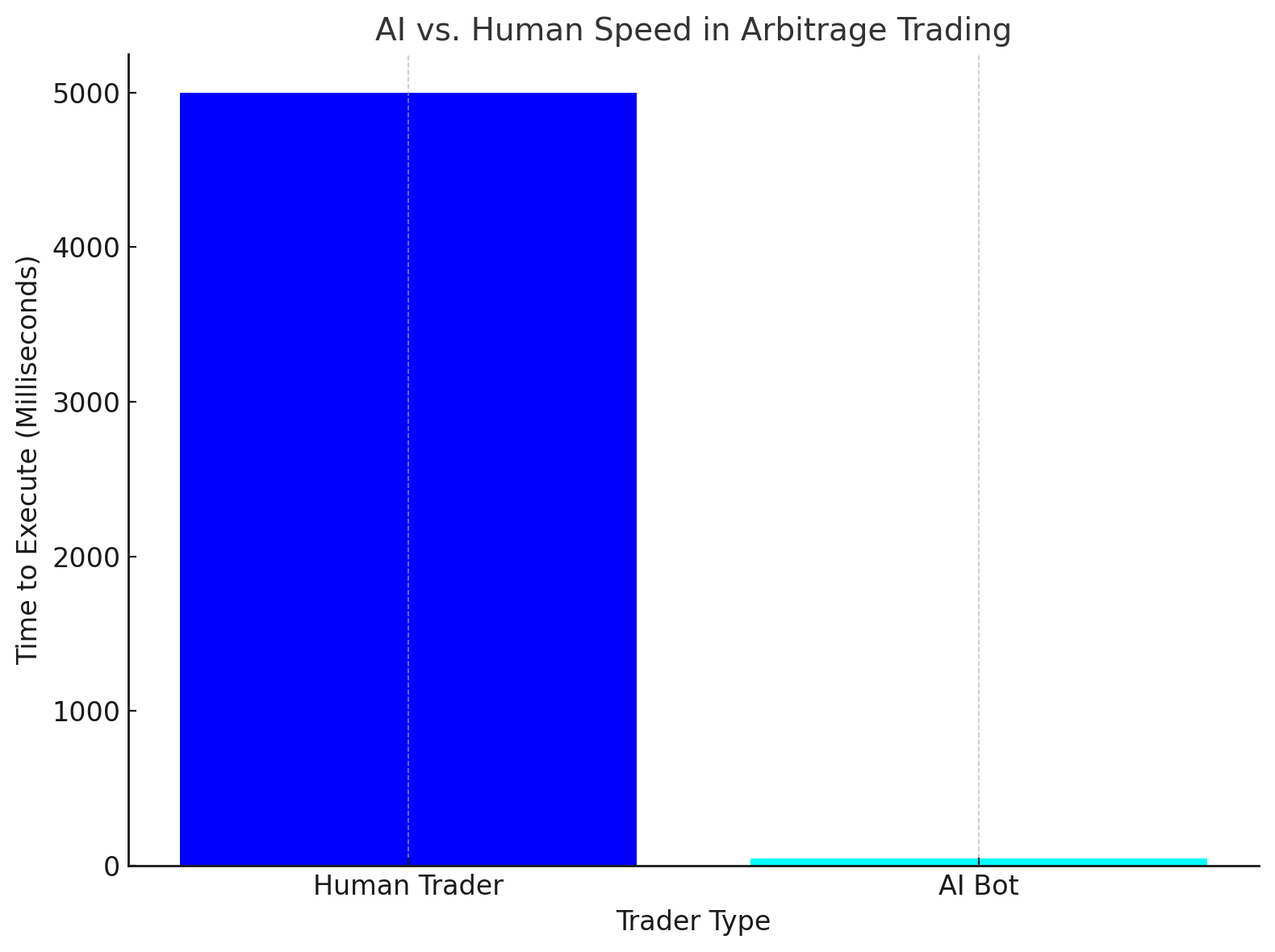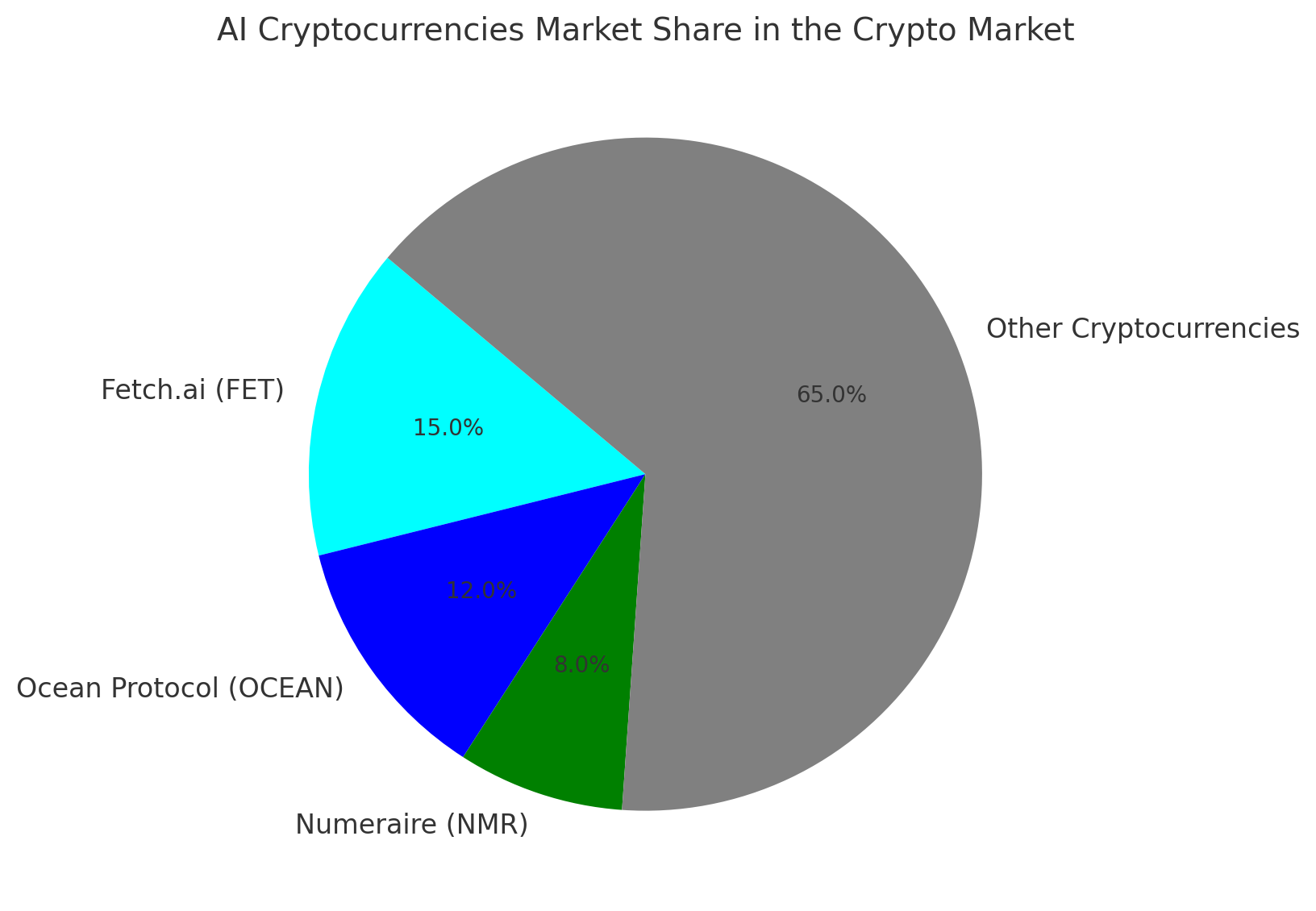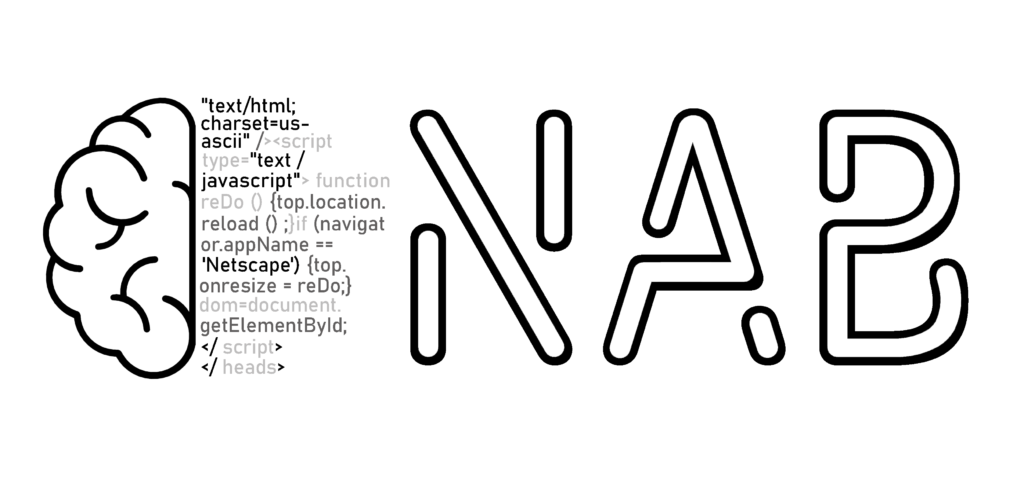As the cryptocurrency market matures, traders are seeking more sophisticated ways to gain an edge. Among the most promising innovations are AI cryptocurrencies—digital assets that either leverage artificial intelligence natively or power platforms that do. When combined with crypto arbitrage, the practice of profiting from price differences across exchanges, AI opens a new chapter of automation, precision, and scale.
In this article, we explore how AI cryptocurrencies contribute to arbitrage strategies, which tokens lead the charge, and how traders can harness their potential responsibly.
What Are AI Cryptocurrencies?
AI cryptocurrencies are digital tokens linked to blockchain projects that integrate artificial intelligence into their core services. Some common applications include:
- Predictive analytics for market movements
- Smart portfolio management
- Data aggregation and interpretation
- Decentralized machine learning protocols
Examples include Fetch.ai (FET), Numeraire (NMR), Ocean Protocol (OCEAN), and Cortex (CTXC). Each of these platforms blends AI and decentralized computing to varying degrees, often serving as infrastructure for data scientists, developers, or even other dApps.
Crypto Arbitrage: A Quick Refresher
Crypto arbitrage involves exploiting price differences for the same asset across multiple exchanges. For instance, if BTC trades at $108,000 on Binance and $108,300 on Kraken, a trader could buy on the former and sell on the latter to pocket the spread.
The catch? This window of opportunity is tiny, sometimes mere seconds. That’s where AI—and AI-driven cryptocurrencies—come in.
How AI Enhances Arbitrage
1. Real-Time Market Scanning
AI can monitor dozens or even hundreds of exchanges simultaneously, identifying profitable arbitrage routes in milliseconds. Algorithms trained on historical market patterns can also predict where spreads are likely to appear next.
2. Latency Optimization
High-frequency arbitrage demands lightning-fast decision-making. Machine learning models can be deployed on low-latency servers, executing trades without human delay.
3. Risk Management
AI models can estimate slippage, volatility spikes, and exchange-specific liquidity issues in real-time—factors that often make or break arbitrage success.

4. Cross-Chain Arbitrage
With the rise of Layer 2s and sidechains (e.g., Polygon, Arbitrum), AI helps assess fees, bridge latency, and potential MEV (miner extractable value) issues across networks—calculations no human could perform fast enough.

Leading AI Tokens and Their Arbitrage Roles
Fetch.ai (FET)
Fetch.ai aims to create a decentralized machine learning platform for complex economic tasks. Its autonomous agents can negotiate trades and even perform arbitrage without user input.
Ocean Protocol (OCEAN)
Ocean’s data marketplace can feed arbitrage bots with clean, timely datasets. Combined with AI, this improves model performance and decision reliability.
Numeraire (NMR)
NMR powers Numerai, a hedge fund that uses crowdsourced AI models. While not focused directly on arbitrage, its architecture offers a glimpse into future decentralized quant trading.

NeuralArb’s Take: Using AI for Practical Arbitrage
At NeuralArb, we leverage proprietary AI models tailored for arbitrage environments. Our bots ingest:
- Real-time price feeds
- Order book depth
- Exchange latency and fee models
- Historical spread patterns
…to make optimized trading decisions. With AI, we’re not just faster—we’re strategically smarter.
For example, our system can predict the likelihood of a price correction on a lagging exchange after a BTC spike on a dominant one. Instead of chasing the spread, our model may front-run the equalization, maximizing ROI.
Read more about how Neural Arbitrage Bot (NAB) works: “NeuralArB White Paper”
Challenges and Limitations
Despite the promise, AI-driven arbitrage has caveats:
- Model overfitting: AI can be too specialized on past data, failing to adapt to market anomalies.
- Data latency: Even milliseconds of delay can invalidate an arbitrage opportunity.
- Exchange risk: Some exchanges have slow withdrawals or strict anti-bot policies, which AI must navigate.
- Regulatory gray zones: In some jurisdictions, arbitrage using AI bots might fall into undefined legal territory.
AI reduces human error—but doesn’t eliminate systemic risk.
💬 Frequently Asked Questions (FAQ)
What are AI cryptocurrencies?
AI cryptocurrencies are digital assets linked to blockchain projects that integrate artificial intelligence into their services, such as predictive analytics, smart portfolio management, and decentralized machine learning protocols.
How does crypto arbitrage work?
Crypto arbitrage involves exploiting price differences for the same cryptocurrency across multiple exchanges. Traders buy low on one exchange and sell high on another, pocketing the price difference as profit.
How does AI improve crypto arbitrage?
AI improves crypto arbitrage by enabling real-time market scanning, optimizing latency, managing risks like slippage and volatility, and enhancing cross-chain arbitrage strategies to maximize profitability.
Which AI cryptocurrencies are popular in arbitrage trading?
Popular AI cryptocurrencies in arbitrage trading include Fetch.ai (FET), Ocean Protocol (OCEAN), and Numeraire (NMR). These tokens integrate AI to improve trading efficiency and decision-making in arbitrage.
What are the challenges of using AI in crypto arbitrage?
Challenges include model overfitting to past data, data latency issues, risks related to exchanges’ withdrawal and anti-bot policies, and regulatory uncertainties in certain jurisdictions.
Final Thoughts
AI cryptocurrencies and crypto arbitrage are a natural match. AI enhances speed, strategy, and survivability in volatile markets, while arbitrage offers quantifiable opportunities for automation.
Still, the key is balance—between automation and oversight, between speed and risk controls.
At NeuralArb, we believe the fusion of AI and arbitrage isn’t just a niche—it’s the future of crypto trading.
Want More?
🔍 Explore our latest Bot’s Arbitrage signals
🧠 Subscribe to Mr. Q NeuralArB in ‘X’ for weekly market AI insights
💬 Join our Telegram group and discuss strategies with fellow data-driven traders
Visit NeuralArb.com/blog for more expert commentary.
Disclaimer: This article is for educational purposes only and does not constitute financial advice. Cryptocurrency trading involves risk.


